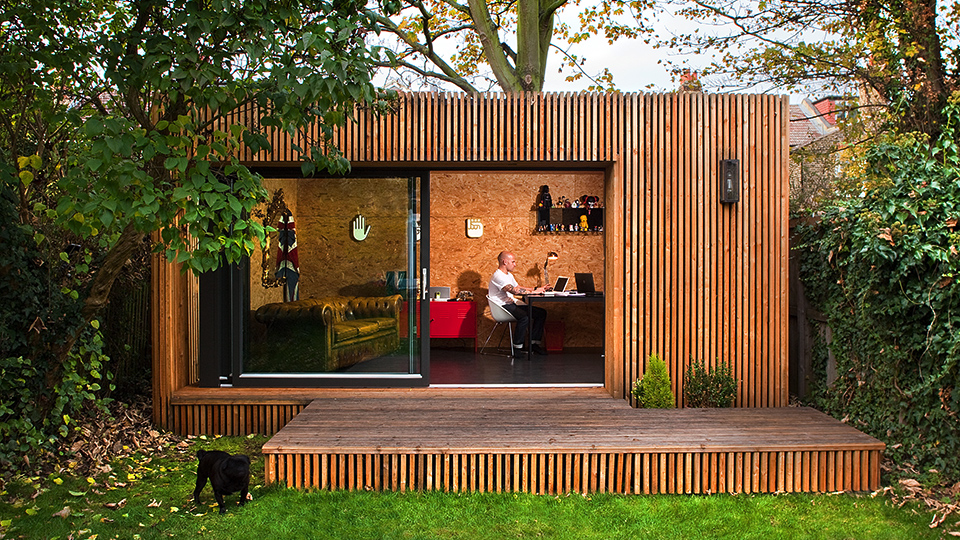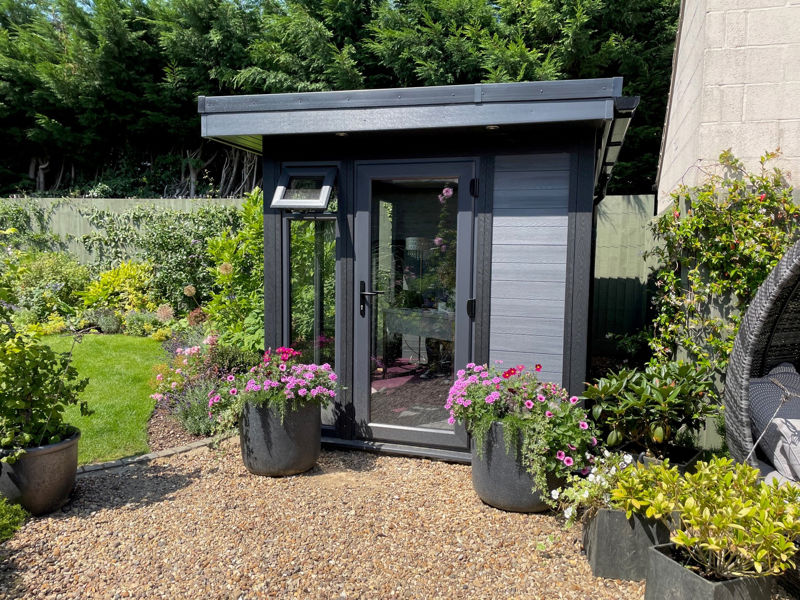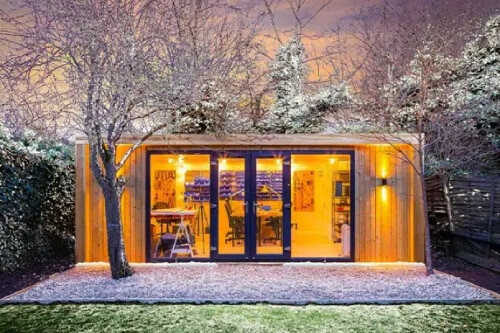Best Reasons On Planning Permission For Garden Extension
Best Reasons On Planning Permission For Garden Extension
Blog Article
What Kind Of Restrictions Do You Have For Your Garden Rooms Or Other Spaces.?
Size restrictions on specific areas are commonly used to determine if you require planning permission prior to building garden rooms, conservatories or outhouses. Here's a brief overview of common size-related criteria you may be required to think about when applying for permission to plan.
If you are planning to construct a detached structure, you will need to get permission if your proposed construction and any existing outbuildings are more than 50% of the land surrounding the original house.
Height Restrictions
Single-story buildings: The maximum eaves can not exceed 2,5 meters. For roofs that have dual pitches, the maximum height must not exceed 4 meters.
If a building is located within 2 meters of the property boundary the height must not be more than 2.5 meters.
Floor Area:
If you don't need planning permission, however the structure you are building is floor area that is greater than 30 square meters and is required to obtain approval from the building regulation.
Distance from borders:
If the building is less than 2 meters away from a boundary, a planning permit is required when the building's height exceeds 2.5 metres.
Building Use
The size of gardens isn't the only consideration but their purpose can determine if planning permission is required. If the purpose of the building is residential accommodation, or a commercial space, approval for planning is likely to be required.
Permitted Development Rights:
In the case of Permitted Development Rights (which permit certain types of work to be carried out without the need for a complete application) Certain size restrictions and restrictions apply. The rights are based on the location of the property an area of conservation or is subject to other restrictions.
Conservatories or Extensions
For one-story rear extensions the maximum depth for a single-story rear extension is usually 4 meters for detached houses and 3 metres for semi-detached and terraced houses. These can be extended to 8 meters or 6 meters, for example as per the Neighbour Consultation Scheme, subject to certain conditions.
The maximum height for an extension to the rear with a single story is 4 meters.
Side Extenders
For side extensions, the width and height cannot exceed four meters.
Volume Restrictions
In certain regions (such as conservation areas and Areas of Outstanding Natural Beauty) A structure that expands the volume of the home in excess of 10 percent or 50 cubic metres (whichever is greater) might require planning permission.
Front Extensions:
Planning permission is usually required for extensions that extend beyond the front that faces the street of the original home.
It is crucial to inquire with your local planning authority because the rules may differ depending on the local council or the property's condition. Even if your property doesn't require permission to plan, a building regulation approval could still be needed to ensure the integrity of your structure. Follow the best garden offices hertfordshire for website examples including garden buildings , garden room permitted development, garden rooms hertfordshire, garden room permitted development, costco garden buildings, garden office, outhouses for garden, Tring garden rooms, ground screws vs concrete, 4m x 4m garden room and more.
What Is The Neighbourhood Plan Permission For Garden Rooms, Etc.?
Planning permission might be required for garden rooms, conservatories or outhouses. Two important considerations overlooking and privacy
Planning permission is required if the proposed structure will cause privacy to be lost by overlooking neighboring properties. This will ensure that the construction doesn't adversely impact the lives of the residents in the area.
Overshadowing and loss of light
A planning permit is usually required when a building will cause significant light loss or overshadowing to nearby homes. The local planning authority will assess the impact of the amount of sunlight and daylight that is available to neighboring homes.
Noise and Disturbance
The planning permission is required if a garden room or extension is planned to be used for noise-producing activities (such as customers visiting your office at home as well as a music studio an office, etc.). It ensures the noise levels aren't going to affect the surroundings.
Character and Visual Impact
The new structure’s dimensions, shapes and overall appearance should be in keeping with the aesthetics of the area. Planning permission ensures aesthetic appeal, and also that the new development does not harm the aesthetics in the neighborhood.
Boundary Proximity
Buildings that are built within 2 meters of a boundary, or structures higher than 2.5 metres may require permission to plan. This is to stop conflict and negative effects on neighbouring properties.
Shared Access and Rights of Way
In order to prevent obstruction or causing harm to shared access points, rights of way or building sites the need for planning approval.
Objection from neighbors:
The right of consultation with neighbors is an essential element of the planning process. If there is opposition from neighbors, the authority for planning will take into account the concerns of neighbors when deciding whether to grant permission.
Impact on Property Values:
While not always a primary aspect, significant changes that may affect the value of homes in the vicinity can influence the need to obtain planning permission. The impacts of these changes will be evaluated by the local authority in making their decision.
Covenants and Deed Restrictions:
There could be covenants or restrictions placed on the property that need to be adhered to regardless of planning approval. These agreements could affect the peace of the neighborhood by defining what can be built and what can't.
Construction Disturbance:
The planning permission may address the concerns of the disruptions that might occur during the construction phase such as noise and dust. It may be necessary to impose conditions to minimize the impact on neighboring properties.
Infrastructure Impact:
If the building's construction puts an additional strain on infrastructure within your neighborhood (e.g. drainage, parking or roads), a planning permit ensures these impacts will be evaluated and dealt with according to the needs of the area.
Community Consultation
In some instances, it may be necessary to consult a wider community especially when it comes to larger or more controversial projects. This allows for more democratic decisions, which takes into account the opinions of the community in which it is located.
Summary The neighborhood concerns are an important aspect in the approval process of garden rooms, conservatories or outhouses. The proposed development must not adversely impact the living conditions of neighbors as well as their privacy, amount of light and noise, or the overall character. Consultation with the local planners and early engagement with neighbors will aid in addressing these issues. Take a look at the most popular conservatory for more info including what size garden room without planning permission, garden office electrics, garden rooms, what size garden room without planning permission uk, insulated garden rooms, garden room vs extension, garden room, my outhouse, ground screws vs concrete base, outhouse garden rooms and more.
What Kind Of Permit Are Required For Garden Rooms Or Other Features On Agricultural Land?
If you are planning to construct a conservatory, a garden office, or an outhouse or if you want to extend your land then you must apply for planning permission. Here are some important things to consider The following: Change of Use
Land designated for agriculture is generally used for agriculture and other related activities. Planning permission is typically required for changing the land use to gardens or residential. This is due to changes to its agriculture purpose.
Permitted Development Rights:
Land for residential and agricultural use have different permitted developments. In some cases agricultural buildings can be built without planning approval. However, these rights only apply to agricultural structures.
Size and Scale
The size and scale determines whether or not planning permission is required. The larger buildings or those that cover a substantial portion of the land are more likely to require planning permission.
Impact on Agricultural Use:
Planning permission will likely to be required when the new construction interferes with the agricultural uses of the land. This may mean reducing the space available for livestock and crops.
Green Belt Land:
Additional restrictions are imposed on agricultural land that is also designated Green Belt to help prevent urban sprawl. Green Belt land is subject to strict criteria and approval for planning permits for construction of new structures.
Design and Appearance
The structure's design and its appearance must fit with the rural landscape of the region. Planning permission is required to ensure that the proposed building won't negatively impact the landscape.
Environmental Impact:
The environmental impacts of any construction on land used for agriculture is to be assessed. A study of the environment may be required in order to get approval for planning to ensure that a new structure will not harm wildlife habitats or local ecosystems.
Nearness to buildings that are already in use:
Planning requirements can be affected by the proximity of a proposed garden office or space close to an existing building for agriculture. Buildings constructed near farms will be treated differently from those on open fields.
Access and Infrastructure:
It is important to consider the effect of the proposed construction on existing infrastructure like roads, waste management, and water supply. Planning permission will determine whether or not the existing infrastructure can support the construction.
Make use of the Class Order:
Planning law specifies the classes of use for agricultural land. Changing the use class to accommodate non-agricultural buildings often requires planning permission to make sure that the new use is in line with local planning policies.
Local Planning Policies
Local planning authorities have specific guidelines for agricultural land. Local planning authorities have special policies for agricultural land.
National Planning Policy Framework
In the UK National Planning Policy Framework is a framework that offers guidelines to land use and development. The planning permission granted for structures built on land used for agriculture will be assessed in light of the NPPF which focuses on sustainable development as well as the protection of rural land.
Planning approval is needed for extensions, conservatories outhouses, garden offices or outhouses on agricultural land. This is because the land needs to be modified to meet local and national policies on planning. For the best outcomes you must consult your local planning authority. See the top rated outhouse room for website tips including garden rooms, garden office hertfordshire, what size garden room without planning permission uk, out house for garden, garden rooms in St Albans, armoured cable for garden room, garden rooms near me, what size garden room without planning permission uk, Tring garden rooms, do i need planning permission for a garden room with toilet and more.